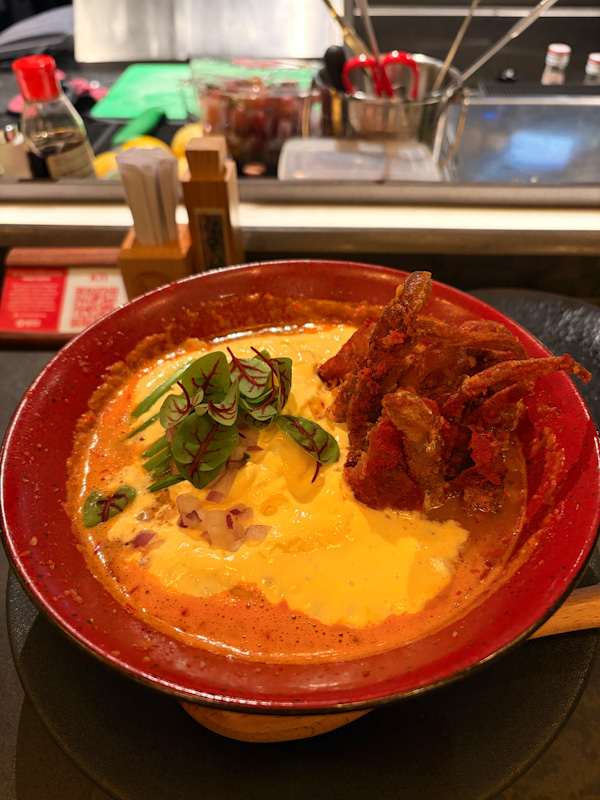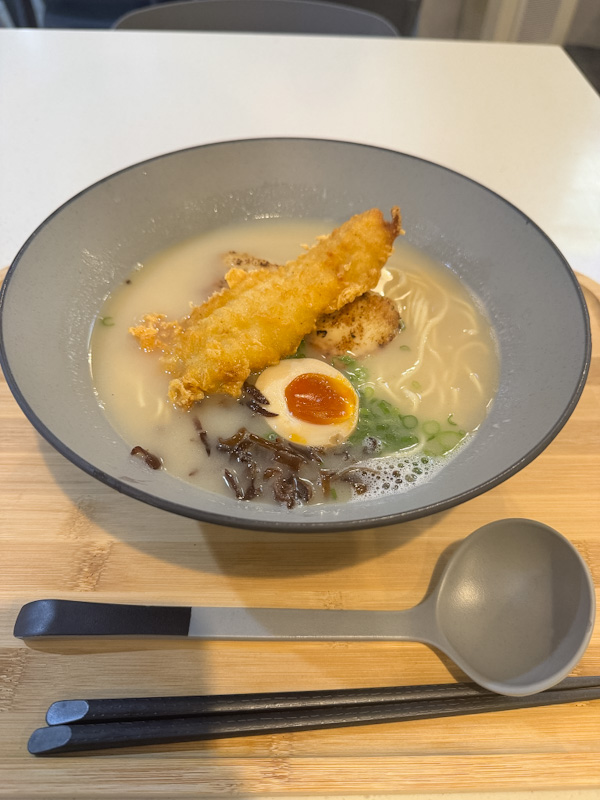Notes about Dry Ramen / Tsukemen / Mazesoba
Mazesoba is mostly about toppings and has little broth, while tsukemen serves noodles and broth separately. In tsukemen, you dip the noodles in the broth as you eat, but in mazesoba, there’s little to no broth, and you mix the various toppings directly with the noodles.
WHAT WE ATE
- Japanese Fusion Mee Pok (Dry), 70/100 (5 May 2025, 21 Trade Hub)
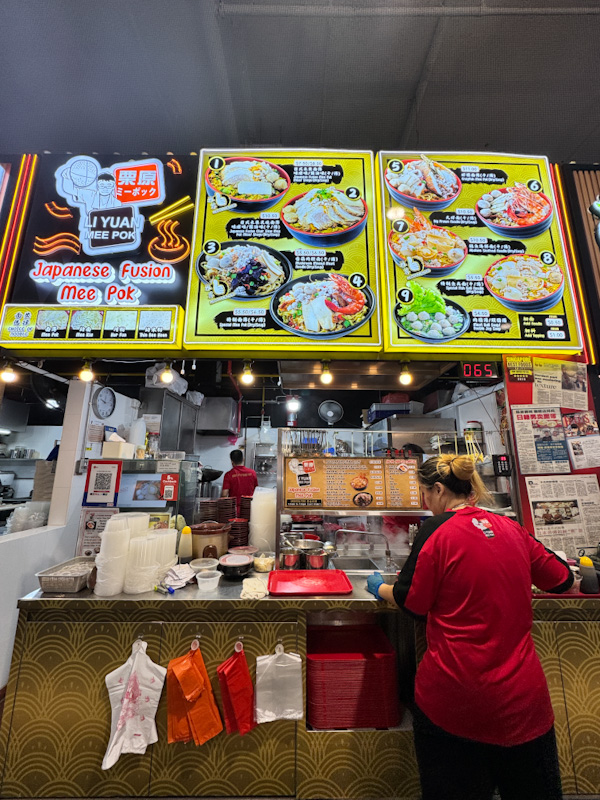
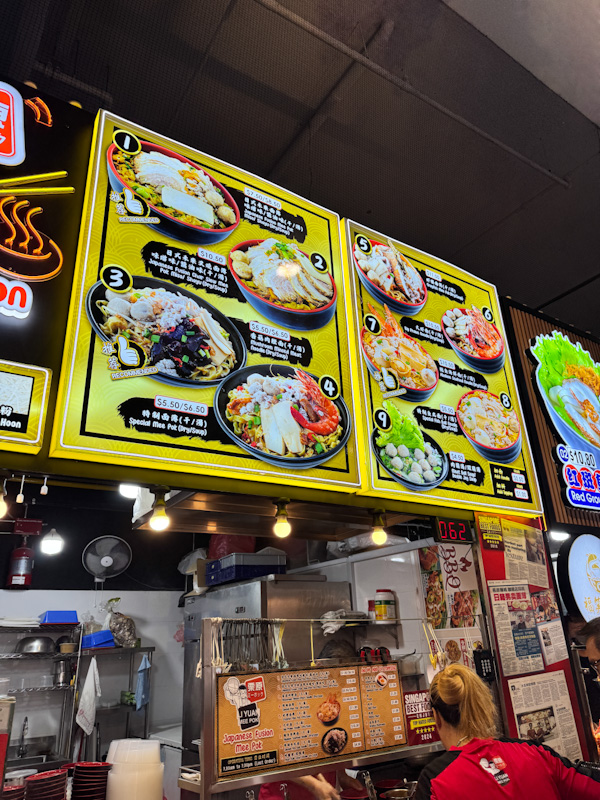
Li Yuan Mee Pok has been making waves for its bold twist on a local classic—think mee pok tossed with Japanese-style chashu, miso broth, and even whipping cream. Run by a Japanese chef who once trained under a Singaporean hawker, the stall promises a fusion of ramen richness with the familiar bite of bak chor mee. It’s an idea that sounds too intriguing to ignore—so I had to try it for myself. Here’s how it fared.
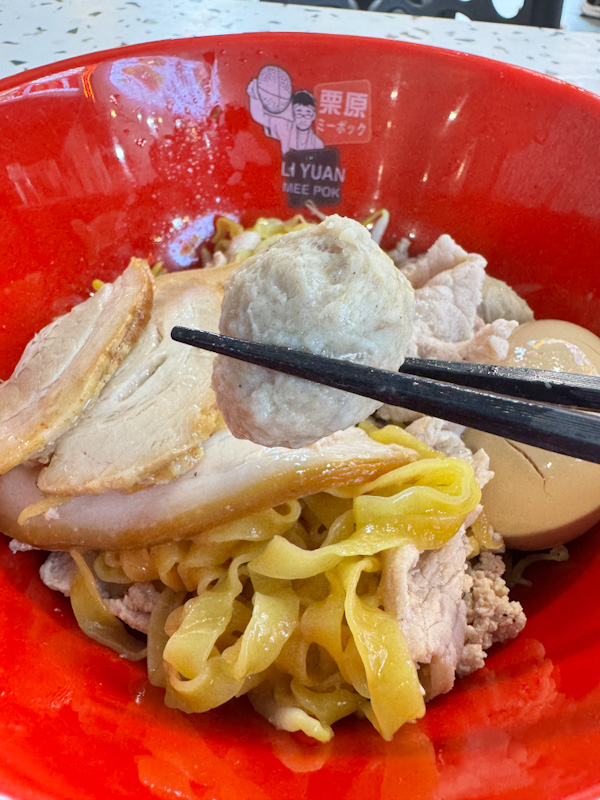
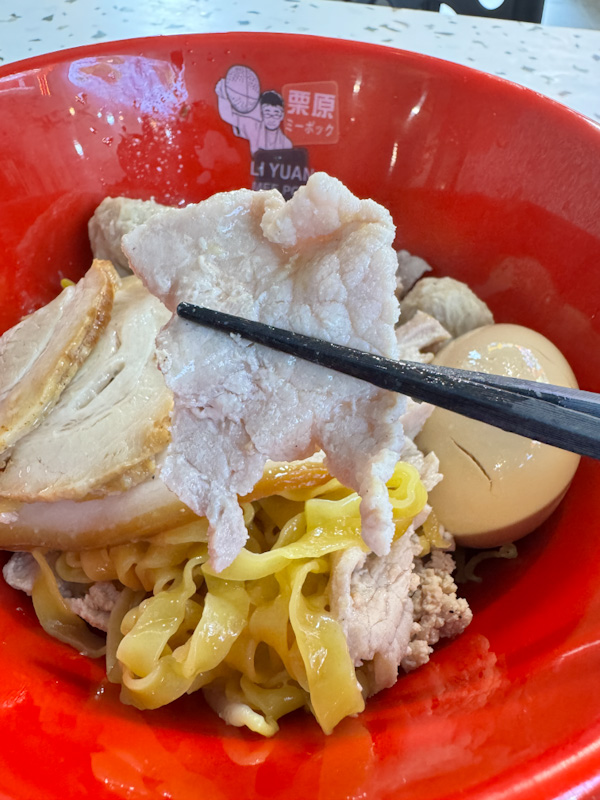
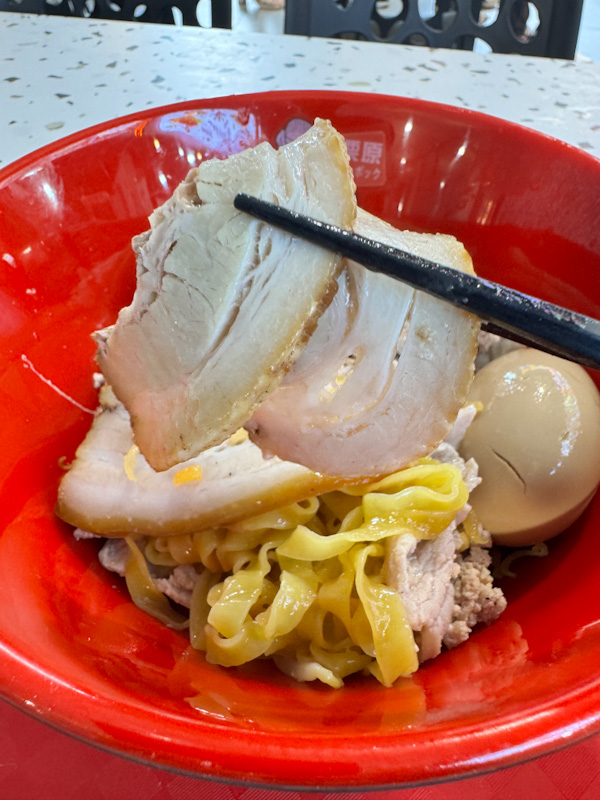
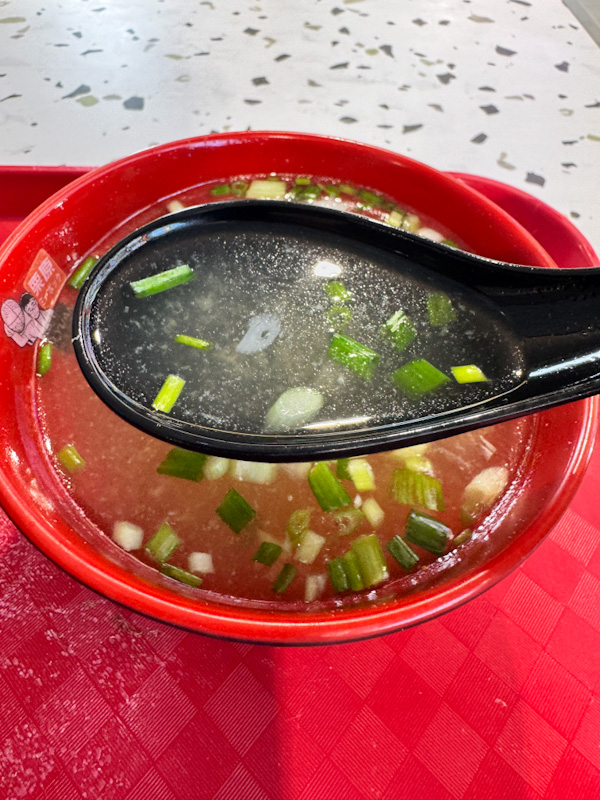
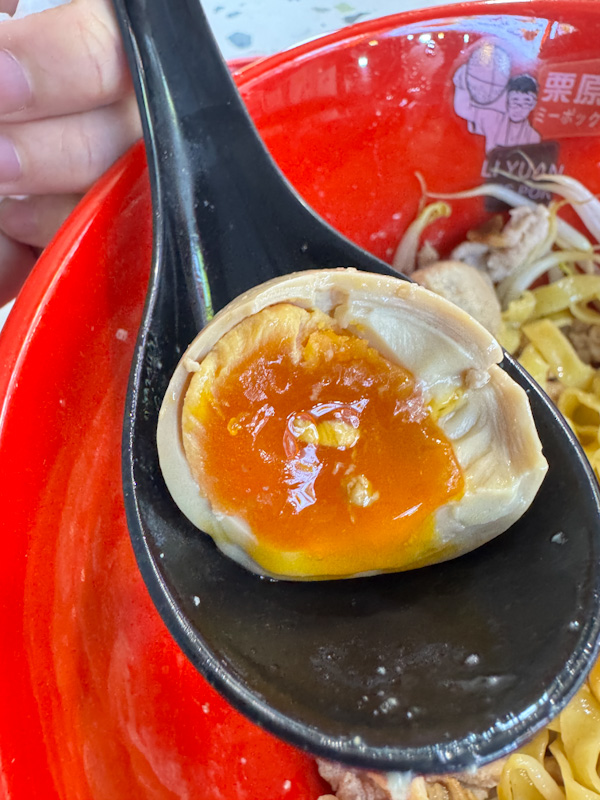
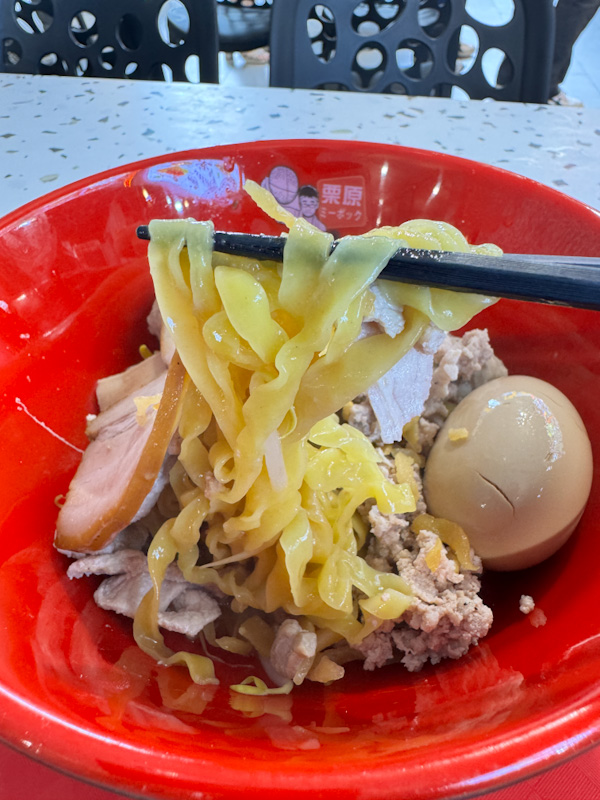
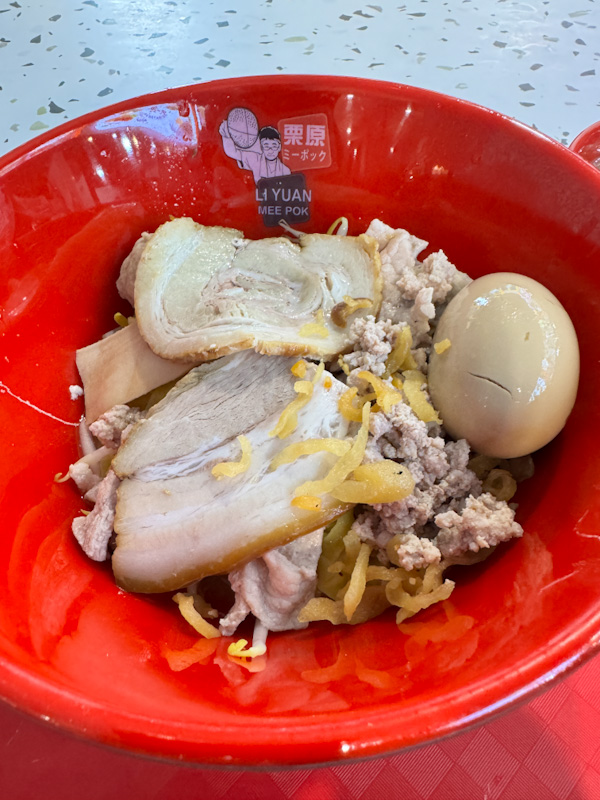
Japanese Fusion Mee Pok (Dry): 70/100
Noodle: 25/35
The noodles here stick to the classic mee pok shape—flat and thin—but the texture sets them apart. They’re firmer than usual, not quite al dente, but with a satisfying springiness and a chewy, mochi mochi bite. Most importantly, there’s no harsh alkaline taste, which makes a big difference. Instead, you get a light wheat flavour that gives the noodles a subtle but welcome depth.
Sauce & Soup: 25/35
The sauce leans sweet upfront, with a savoury body and a creamy, lingering finish. It’s rich but not greasy—clean and nicely balanced, letting the other ingredients shine through. While slurping, I caught what seemed like a hint of smokiness. Might’ve been my imagination, but if it was real, it worked really well.
The accompanying soup looked deceptively plain—clear and watery at first glance—but actually packed a solid flavour. Lightly salty, slightly sweet, with a gentle meaty depth. It pairs nicely with the dry noodles, adding a comforting contrast.
Meat: 10/20
You get a good variety of proteins for the price, though the quality is mixed:
- Sliced pork is similar to local mee pok—firm, juicy, and decently flavourful.
- Minced meat is chunky and great at soaking up the sauce, giving a savoury boost in every bite.
- Chashu is the weakest link—dry, thinly marinated, and a bit flat. It has a faint savouriness and a sourish undertone, but not enough to stand out. The fatty part has a jelly-like texture but could be softer.
- Meatball has a great snappy, bouncy texture, though the flavour could use refining—the strong meaty odour is a bit distracting.
Topping: 10/10
Toppings are where this dish pulls ahead:
- A slice of abalone adds a touch of luxury. It’s chewy and slightly overcooked but brings good umami.
- Negi is self-serve and free flow. Fresh, crunchy, and sharp—perfect as a palate lifter.
- Crispy pork lard delivers that rich, sinful punch. Could definitely use more of it.
- Marinated egg (added extra) is spot on in texture—perfectly runny yolk. The mirin-heavy marinade leans sweet but is nicely balanced.
- Bean sprouts add crunch and a clean vegetal note, keeping the dish from getting too heavy.
Summary: A clever twist on mee pok that blends hawker comfort with Japanese-style finesse. The noodles and toppings are solid, and the sauce is surprisingly refined. There are some misses with the meat, especially the chashu, but overall it’s a satisfying, well-rounded bowl that punches above its price point.
DISCLAIMER
One man’s meat is another man’s poison.
Find out more about our palettes and how we evaluate our ramen here. 😉

